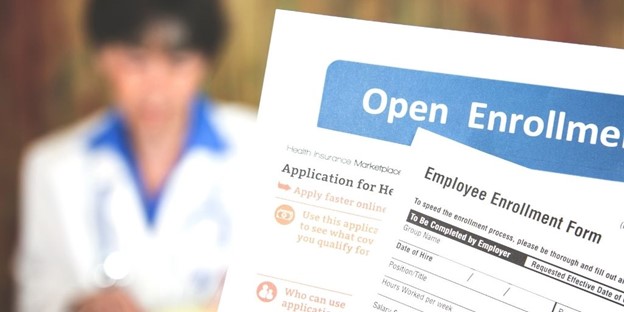By Mark Olsen, Managing Director at PlanPILOT
Behavioral finance is generally defined as the study of the influence of human psychology on decision-making in matters concerning money or finances, including the aggregate effect of a large number of individual decision-makers on financial market movements. It is based upon the theory that decision-makers (humans) are not always rational, cling to their biases or take cognitive shortcuts, and often succumb to emotional behavior or exceed their limits of self-control.
These behaviors are often detrimental to successfully enrolling eligible employees into a company retirement plan, as well as encouraging participants, once enrolled, to remain in the plan and succeed in accumulating retirement savings for the future. By understanding how behavioral finance tendencies influence employee behavior in this regard and utilizing this understanding in plan design, plan sponsors can encourage higher participation and contributions by employees and assist them in their savings objectives.
Overcoming Human Inertia
The First Law of Motion, stated simply, is that an object at rest stays at rest unless acted upon by an external force. So it is with humans; we tend to stay with our status quo unless something compels us to act. Enrolling in a company retirement plan and deferring income to contributions (instead of spending today) can be intimidating and unpleasant to some participants.
To counter this tendency, many plan sponsors have added automatic enrollment features into the plan once employees become eligible. As of the SECURE Act 2.0 in 2022, this feature is now required of all newly established qualified retirement plans. Studies have shown that auto-enrollment (even with an opt-out choice) dramatically increases participation rates within defined contribution plans.
Further, the effects of how this feature is presented to participants also matters. Structuring the alternative (to the default enrollment) as an “opt-out” tends to increase participation rates rather than the opposite (opting-in).
Help Participants With Loss Aversion
Loss aversion is a strong emotional behavior. The pain of loss has been shown to be twice the pleasure of potential gain. This tendency may deter employees from proactive decisions that could help them accumulate retirement savings. These include enrolling in the plan at all, choosing smaller payroll deferral contributions, or selecting overly conservative investment choices that could slow the growth of their account over time. Loss aversion also includes panic-selling of equity and other investments during inevitable market declines, often at what turns out to be market lows, which can be costly to a participant’s investment success.
Educational resources and access to investment advisors are two solutions to this issue. Equally important is to include risk tolerance assessment materials, information on market volatility, and interactive retirement account growth models that can help a participant understand the implications of contribution and asset allocation choices. Part of loss aversion is the fear of making a mistake when selecting investments or asset allocation. Providing education or the assistance of an investment professional can help alleviate this issue.
Overconfidence Can Lead to Poor Choices
Participant overconfidence can also be counter-productive to long-term success. There are those participants (due to age or inexperience) who have never directly endured a market correction and the emotional impact such events can cause. It is one thing to casually observe a correction in the news, but quite another to see the value of your own money decrease by as much as 30 percent over a short time period. Similarly, participants may expect more investment return than is realistic or choose investments with the belief that these “will always go up.”
Just as with loss aversion, overconfidence can be resolved with educational materials, discussion with qualified investment professionals, and the other features mentioned above. Emphasis on historic and realistic investment return assumptions and potential downsides of aggressive investment allocations should be underscored.
The Benefits of Limiting Investment Choices
Retirement plans are often designed with wide varieties of investment options from a multitude of providers that appear to cover the spectrum of investment sectors. While the reasoning may be to provide suitable diversification and choice, the notion of “more is better” has actually been shown to deter participation, not enhance it.
Even for those who profess to be “experienced investors,” sorting through a large menu of allocations or fund choices may be daunting. For inexperienced participants, too many choices (whether investment-related or even while enrolling in the plan itself) may provoke “decision paralysis” and trigger a psychological “flight” response where the employee declines to even enroll at all. Providing “target-retirement” funds as default investments may help participants who may be uncomfortable with such decisions.
Include Other Features to Improve Participation
Other enhancements to retirement plans can help participants improve their retirement savings success. Along with auto-enrollment, default contribution rates have been effective as a guide to enrollees of how much they might contribute each pay period to their retirement account. Many who are inexperienced with personal finance often ask their plan sponsor or the investment professional how much they should save in the retirement plan. A default contribution amount (which, of course, can be changed by the participant) can be a gentle guide at enrollment. Of course, such defaults ought to consider an available employer match and the advantages of maximizing that benefit.
Similarly, many plan sponsors incorporate a graduating contribution percentage schedule that helps a participant overcome inertia and assists them in achieving a higher savings rate over time. Such schedules might follow historical inflation and wage-increase data toward a target savings rate that might not otherwise be reached without a disciplined structure for the participant to approve and follow.
Utilizing Professional Assistance
PlanPILOT is uniquely positioned to help employers customize and design benefit plans that meet their needs and objectives and those of their participants. If you’re ready to upgrade to a new standard for your benefit planning, reach out to us at (312) 973-4913 or send an email to mark.olsen@PlanPILOT.com to learn more about how we can customize our services and your plan to fit your unique needs.
About Mark
Mark Olsen is the managing director at PlanPILOT, an independent retirement plan consulting firm headquartered in Chicago. PlanPILOT delivers comprehensive retirement plan advisory services to 401(k), 403(b), and 457 plan sponsors. His specialties include plan governance, investment searches, investment monitoring, and plan oversight. Mark is recognized as a leader in the industry and speaks at national conferences, including those organized by Pensions & Investments, and CUPA-HR.





